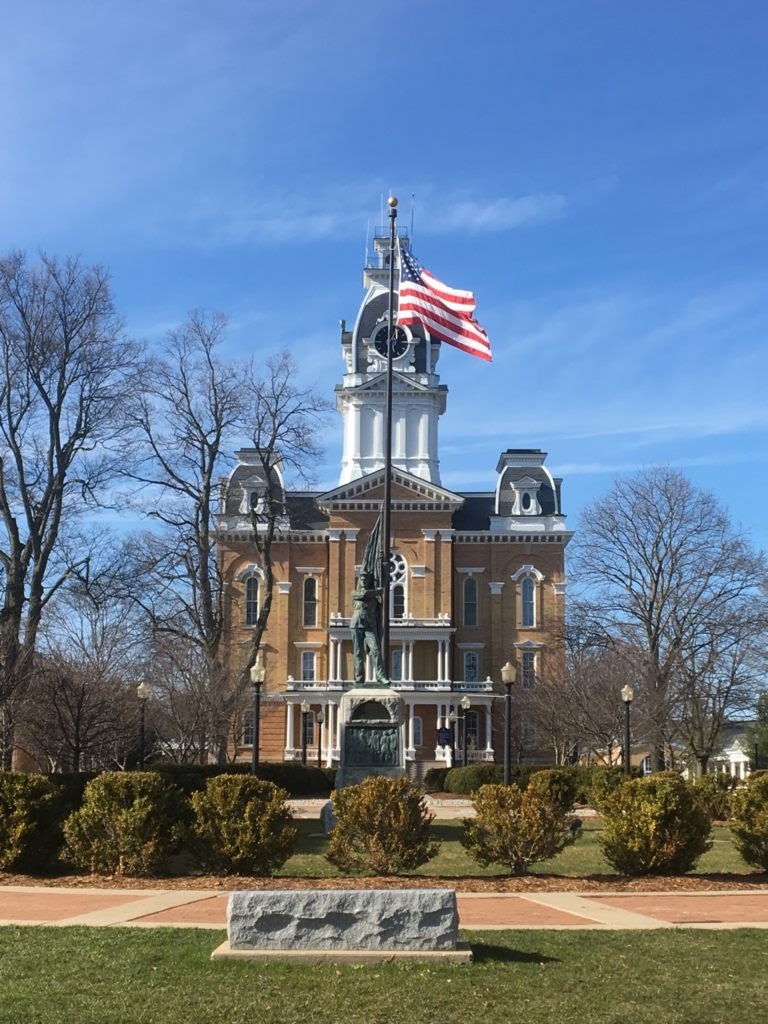
Virginia Aabram | Collegian
A student-made documentary on Hillsdale College and the Civil War premiered to a standing-room-only audience on Tuesday night.
“This is a story that needed to be told for the last hundred years since documentaries have been around,” said Buddy Moorehouse, a professional filmmaker who oversaw the film’s production. “I’m so proud that they were the ones who got to tell that story.”
The film was a group project in Moorehouse’s Video Storytelling course, involving the work of junior Gabrielle Bessette, senior Reagan Gensiejewski, senior Lily McHale, and sophomore Carter McNish.
The documentary tells the stories of four male Hillsdale students who served in the Union army during the Civil War — Henry Magee, Moses Luce, Asher LaFleur, and Richard Seage — as well as one female student, Mary Blackmar, who served as a military nurse.
More than 500 Hillsdale students and alumni fought in the Civil War, according to Associate Professor of Management Peter Jennings, who appears in the film.
“Behind the statistic is a story,” McNish said. “There were hundreds of them, and we told five of them.”
Magee enlisted at the outbreak of the war in 1861 and served until it ended. He, Luce, and LaFleur all served in the Fourth Michigan Infantry.
During a retreat at Spotsylvania Court House in Virginia in 1864, Luce made it to safety only to hear LaFleur cry to him from where he had fallen, wounded in the leg.
“Luce! Luce! I’m bleeding to death! I’m bleeding to death!,” LaFleur cried.
Under enemy fire, Luce returned to the battlefield and carried his friend to safety.
During the Battle of Gettysburg in 1863, Confederate troops captured the Union flag. A Union officer rallied a group of soldiers to take it back. He killed the Confederate soldier with the flag, but was immediately killed by another Confederate himself. Seage seized the flag and raised it momentarily, only to fall down wounded. What happened to the flag afterwards is unknown.
“The battle for the flag was a small, but significant and symbolic moment, and on the field, soldiers saw the fight for the flag,” Jennings said in the documentary. “It was inspiring to them. It helped them rally and fight back.”
Jennings said Seage and the battle for the flag were the inspiration behind the Civil War monument.
Blackmar, a 21-year-old medical student at Hillsdale, wanted to serve in the war, but the minimum age to be a military nurse was 30. Blackmar lied about her age and obtained a job at a military hospital so near the frontlines that one drummer nicknamed it “the halfway house.”
Blackmar once held her fingers over the artery of a hemorrhaging Confederate soldier for 24 hours unitil a surgeon arrived, saving his life.
Kim Gehrke, coordinator for institutional advancement and an attendee at the screening, said it was striking that the soldiers were fighting not only for their homeland, but also for their ideals.
“They were defending and fighting for their ideals — what they believed was good and true and beautiful about this country and their home and what it meant to be an American and what it meant to be a free man,” she said.
Gehrke continued in speaking of the bravery the soldiers showed.
“They felt that to fulfill who they were supposed to be as men meant obeying this call to go and fight,” she said, “to free the slaves, to defend the Union, to uphold our flag and the principles on which their country was founded.”
Gensiejewski reflected on the meaning of the historical event for Hillsdale’s community today.
“It reminded me that Hillsdale is teaching the right things,” Gensiejewski said. “I think it just showed us the importance of how we need to document that. We need to tell people, we need to battle the evil in this world with what we have here at Hillsdale.”
Moorehouse plans to offer his course on documentary filmmaking in the spring semester.
“Anyone is welcome to take it,” he said.

